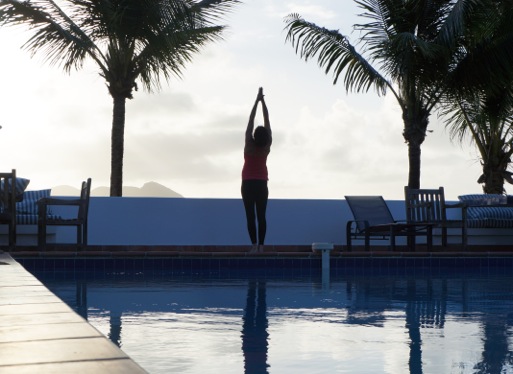The next chapter for review from my soon to be released book on yoga teaching, “Stretched: Build Your Yoga Business, Grow Your Teaching Techniques,” is about what you say and how you say it when you teach. It’s called “Using Essential Language in Your Teaching.” This might seem like an obvious thing as of course, you’ll be talking about how to get into each pose, where to place your hands, your feet and other actions that are relevant to explaining the pose. But, we all know that what you say and what people hear can be totally different things and as a teacher, we need to work to minimize any challenge in translating from words to action.
So, how do you do that? How do you maximize the chances that what you SAY will be what you SEE in your students as you teach? I’ll give you what I believe to be the best tip for creating the right action: say as little as possible. The more you say, generally, the less people will hear. We all come to yoga class with a lot on our minds. Let’s be honest; there’s not a lot of space left in our heads to fit in more information, let alone the alignment of a yoga pose. This is further complicated by the newness of the student because the newer they are, there can be an even greater challenge to hearing and creating the action. So, the more crisp, direct and “to the body” (not the head) your directions are, the best chance you have that people will understand what you’re saying.
This chapter will break down the various features of the voice: what you say and how much, tone of voice and volume, pace of speech and preparing to speak before you start to teach. One other note: sometimes when people teach yoga, they use what people call their “yoga voice,” that smooth, whispery type voice that often accompanies meditation DVDs or yoga classes on TV. I’ll admit, the idea of going in to teach a class and completely changing the quality, tone and volume of your voice is strange. People want you to sound like YOU. But, by the same token, those same factors (tone, quality, volume) can be used by you as a teacher to create right action in the pose. It also allows you to create an experience that doesn’t shock the nervous system ( as in, yelling the instructions at students) and allows you to create an environment that is soothing to the nervous system. If you want to make it even more soothing, your tone will reflect that. If you want to make it more vigorous, your tone will reflect THAT. Just keep in mind that it is not important to make yourself crazy worrying about the idea of a “teacher voice.” ( I know this is something that gets ridiculed in some articles). Just speak authentically, in your own voice, but remember the variables you can use to change it up.
PS: This is the cover photo from the book.
Next up: Chapter 12, Bringing Anatomy into Your Teaching

